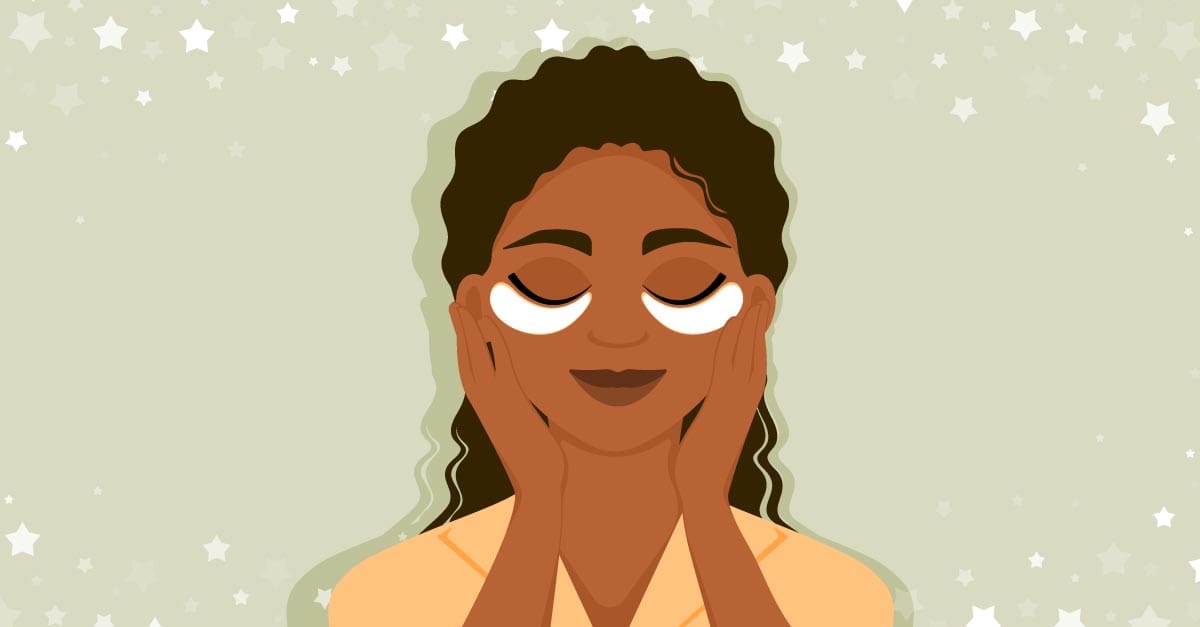It’s never fun to look in the mirror and see dark, puffy circles under your eyes. Maybe you pulled an all-nighter the night before, or you’ve had these dark circles for as long as you can remember. Anyone at any age can develop them — but some people may be more likely to than others.
Keep reading to learn more about why you may have developed dark undereye circles and what you can do to treat them. We’ll give you some home remedies to try or treatments to ask your doctor or dermatologist (skin specialist) about at your next appointment.
What Causes Dark Undereye Circles?
We’ve all stayed up too late and woke up the next morning to find dark, puffy circles under our eyes at one point or another. But why do they happen in the first place? There are several reasons why these dark circles — known as periorbital hyperpigmentation (POH) — develop.
Skin Changes as You Age
The blood vessels underneath your skin can change the color and appearance of the area around your eyes. The more visible your blood vessels are, the darker your skin may look. As we age, we lose the fatty tissue in the lower eyelid and underneath the eyes. The thinner skin lets blood vessels show through — which makes the area look more purple, blue, brown, or black (depending on your natural skin tone). This is why older adults tend to have darker circles under their eyes.
Lack of Sleep
If you’re not getting enough sleep, your skin may look paler than normal. This can make the blood vessels under your eyes stand out more.
Location of Blood Vessels
Some people have blood vessels closer to the surface of their skin compared to others. As a result, they can develop dark or purple areas of skin on their lower eyelids and underneath their eyes.
Skin Inflammation
If you’re living with an inflammatory skin condition like atopic dermatitis (eczema) or lichen planus pigmentosus, you may notice darker circles under your eyes. Skin inflammation can trigger your skin cells to make more melanin or pigment than they normally do. This is known as post-inflammatory hyperpigmentation, and it can develop in other areas of skin affected by inflammation.
Allergic reactions can also cause blood vessel swelling and skin darkening. Scratching and rubbing the skin under your eyes leads to puffiness and irritation that make the dark circles look worse.
Using Certain Eye Medications
Some medications can also darken the skin under your eyes. Studies have found that people using medicated eyedrops to treat glaucoma (an eye condition that damages your optic nerve) may develop POH. Examples include bimatoprost and latanoprost. However, POH tends to go away on its own after you stop using these treatments. (Always check with your doctor first before stopping treatment.)
Genetics
Your genetics can also play a role in your skin’s appearance. POH can run in families — if a parent or sibling has dark undereye circles, you may be more likely to develop them yourself. One study of a family with POH reported that many members noticed they had dark circles early in their childhood and that they continued getting darker with age. It’s also worth noting that dark undereye circles are more common in people with darker skin tones.
Treating Dark Undereye Circles
If you’re ready to tackle your dark circles, here are some home remedies you can try!
- Hit the hay: We know it’s easier said than done, but getting more sleep can help treat your dark, puffy undereye circles. The National Heart, Lung, and Blood Institute recommends adults get 7 to 9 hours of sleep a night. Try sleeping with an extra pillow propping your head up to prevent fluid buildup under your eyes.
- Apply a soothing eye treatment: Calm inflammation and swelling with a cold compress directly on your eyelids as needed. The Cleveland Clinic recommends using the back of a cold spoon to shrink swollen blood vessels and reduce puffiness. You can also use cooling cucumber slices or cold teabags to treat yourself to a spa day!
- Use makeup: Need to hide your dark circles in a pinch? Put a few dabs of concealer or full-coverage foundation under your eyes and blend it in with the rest of your makeup. You’ll leave the house feeling more confident and ready to take on the day.
Looking for a more permanent solution? Your doctor or dermatologist can recommend treatments to lighten and tighten your skin.
- Bleaching agents: Ask your dermatologist about creams that lighten your skin. Hydroquinone is a popular option for treating acne scars and hyperpigmentation.
- Laser resurfacing: This technique uses focused beams of light to remove the outer layer of skin and stimulate collagen production deep in the tissue. You’ll notice plumper, lighter skin after a few treatments.
Chemical peels: Dermatologists use mild acids like alpha hydroxy acid to treat dark patches of skin.

